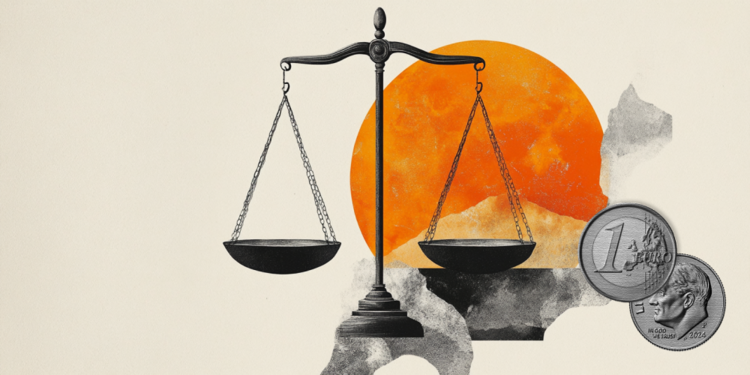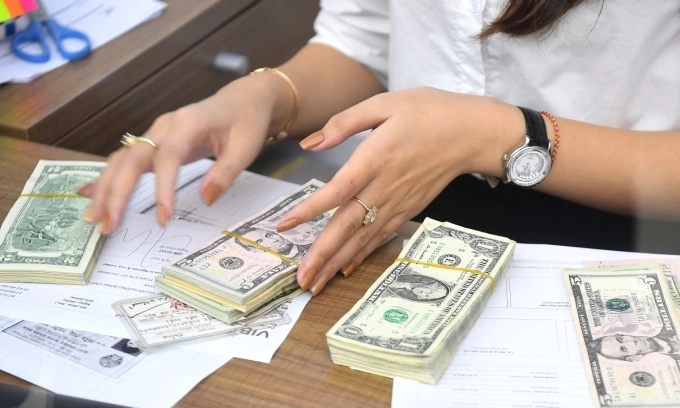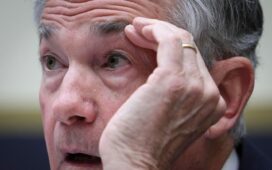- EUR/USD trades in a narrow channel above 1.0400 on Wednesday.
- The pair could continue to push higher once it clears 1.0440.
- ECB President Christine Lagarde will speak at the World Economic Forum later in the day.
Following the pullback seen in the European session on Tuesday, EUR/USD reversed its direction and closed the day marginally higher. The pair trades in a tight range above 1.0400 early Wednesday but the technical outlook suggests that the bullish potential remains intact.
Euro PRICE This week
The table below shows the percentage change of Euro (EUR) against listed major currencies this week. Euro was the strongest against the US Dollar.
| USD | EUR | GBP | JPY | CAD | AUD | NZD | CHF | |
|---|---|---|---|---|---|---|---|---|
| USD | -1.33% | -1.22% | -0.12% | -0.93% | -1.09% | -1.14% | -0.69% | |
| EUR | 1.33% | 0.06% | 1.12% | 0.30% | 0.30% | 0.10% | 0.52% | |
| GBP | 1.22% | -0.06% | 1.00% | 0.23% | 0.25% | 0.02% | 0.45% | |
| JPY | 0.12% | -1.12% | -1.00% | -0.80% | -0.92% | -1.10% | -0.75% | |
| CAD | 0.93% | -0.30% | -0.23% | 0.80% | -0.10% | -0.20% | 0.21% | |
| AUD | 1.09% | -0.30% | -0.25% | 0.92% | 0.10% | -0.31% | 0.14% | |
| NZD | 1.14% | -0.10% | -0.02% | 1.10% | 0.20% | 0.31% | 0.23% | |
| CHF | 0.69% | -0.52% | -0.45% | 0.75% | -0.21% | -0.14% | -0.23% |
The heat map shows percentage changes of major currencies against each other. The base currency is picked from the left column, while the quote currency is picked from the top row. For example, if you pick the Euro from the left column and move along the horizontal line to the US Dollar, the percentage change displayed in the box will represent EUR (base)/USD (quote).
The bullish opening in Wall Street, followed by a risk rally, made it difficult for the US Dollar (USD) to stay resilient against its rivals and helped EUR/USD push higher in the second half of the day on Tuesday.
Early Wednesday, US stock index futures trade in positive territory. In the absence of high-impact data releases, EUR/USD could extend its recovery in case risk flows continue to dominate the action on Wednesday.
Later in the day, European Central Bank President Christine Lagarde will participate in the dialogue ‘Beyond Crisis: Unlocking Europe’s Potential’ at the World Economic Forum in Davos, Switzerland. Unless she comments on policy outlook, this event is unlikely to have a significant impact on the Euro’s valuation.
In the meantime, investors will keep a close eye on US President Donald Trump’s remarks on possible trade policies. On Tuesday, “the European Union is very, very bad to us,” Trump said and added: “So they’re going to be in for tariffs. It’s the only way you’re going to get fairness.” If Trump announces a plan to aggressively tariff European imports, EUR/USD could turn south.
EUR/USD Technical Analysis
The Relative Strength Index (RSI) indicator on the 4-hour chart holds above 60 and EUR/USD trades above 1.0390-1.0400, where the 200-period Simple Moving Average (SMA) meets the Fibonacci 50% retracement of the latest downtrend. On the upside, 1.0440 (Fibonacci 61.8% retracement, 50-day SMA) aligns as next resistance before 1.0500 (round level, Fibonacci 78.6% retracement).
If EUR/USD retreats below 1.0390-1.0400, next supports could be spotted at 1.0350 (Fibonacci 38.2% retracement) and 1.0320 (100-period SMA).
Euro FAQs
The Euro is the currency for the 19 European Union countries that belong to the Eurozone. It is the second most heavily traded currency in the world behind the US Dollar. In 2022, it accounted for 31% of all foreign exchange transactions, with an average daily turnover of over $2.2 trillion a day. EUR/USD is the most heavily traded currency pair in the world, accounting for an estimated 30% off all transactions, followed by EUR/JPY (4%), EUR/GBP (3%) and EUR/AUD (2%).
The European Central Bank (ECB) in Frankfurt, Germany, is the reserve bank for the Eurozone. The ECB sets interest rates and manages monetary policy. The ECB’s primary mandate is to maintain price stability, which means either controlling inflation or stimulating growth. Its primary tool is the raising or lowering of interest rates. Relatively high interest rates – or the expectation of higher rates – will usually benefit the Euro and vice versa. The ECB Governing Council makes monetary policy decisions at meetings held eight times a year. Decisions are made by heads of the Eurozone national banks and six permanent members, including the President of the ECB, Christine Lagarde.
Eurozone inflation data, measured by the Harmonized Index of Consumer Prices (HICP), is an important econometric for the Euro. If inflation rises more than expected, especially if above the ECB’s 2% target, it obliges the ECB to raise interest rates to bring it back under control. Relatively high interest rates compared to its counterparts will usually benefit the Euro, as it makes the region more attractive as a place for global investors to park their money.
Data releases gauge the health of the economy and can impact on the Euro. Indicators such as GDP, Manufacturing and Services PMIs, employment, and consumer sentiment surveys can all influence the direction of the single currency. A strong economy is good for the Euro. Not only does it attract more foreign investment but it may encourage the ECB to put up interest rates, which will directly strengthen the Euro. Otherwise, if economic data is weak, the Euro is likely to fall. Economic data for the four largest economies in the euro area (Germany, France, Italy and Spain) are especially significant, as they account for 75% of the Eurozone’s economy.
Another significant data release for the Euro is the Trade Balance. This indicator measures the difference between what a country earns from its exports and what it spends on imports over a given period. If a country produces highly sought after exports then its currency will gain in value purely from the extra demand created from foreign buyers seeking to purchase these goods. Therefore, a positive net Trade Balance strengthens a currency and vice versa for a negative balance.






